How to complete the London to Brighton Veteran Car Run
Posted by Chris Graham on 17th January 2024
Master mechanic Colin Anton explains what’s involved in keeping a 1904 Rambler on the road for the London to Brighton Veteran Car Run.
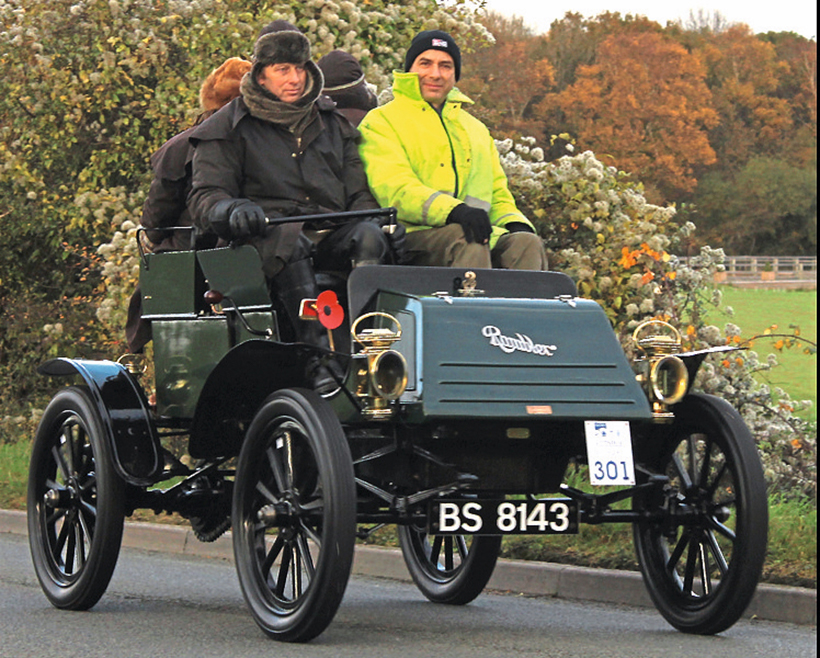
Colin Anton (n/s/f) gives us the lowdown on keeping a veteran together on the Sotheby’s London to Brighton Veteran Car Run. (Pic: Colin Anton Collection)
The team consisted of owners Andy and Jacqui Parncutt from Uckfield, in East Sussex, Steve, Neil and me. The prepping for the London to Brighton Veteran Car Run started for Andy and Neil every Sunday throughout October. This consisted of filling up the greasers, stripping and cleaning the band brakes, Neatsfoot oil on the leather cone clutch and flat belts, to name just a few of the tasks. Andy and Jacqui were doing the brass lamps on the Friday before, over a gin and tonic!
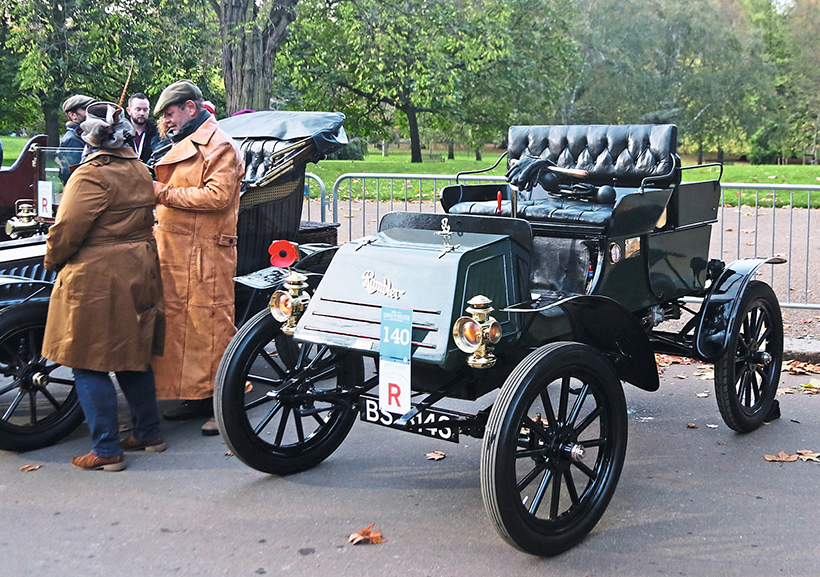
Right, we’re ready for the long but dry day ahead. (Pic: Colin Anton)
On the road test the trembler coil started giving trouble. This was on Friday 3rd November, help! It meant a dash down to Nigel Parrott of Veteran Engineering at Marle Green, Heathfield, for a spare.
Rosie is a 1903 Rambler P Roundabout with single-cylinder water-cooled 6.5hp engine, two-speed transmission, tiller steering and full elliptical springs. The engine is mid-mounted, so everybody sits on top of it. The original radiator is bolted directly on top of the cylinder block, which faces backwards, so the driver and co-pilot sit over the flywheel and gear assembly.
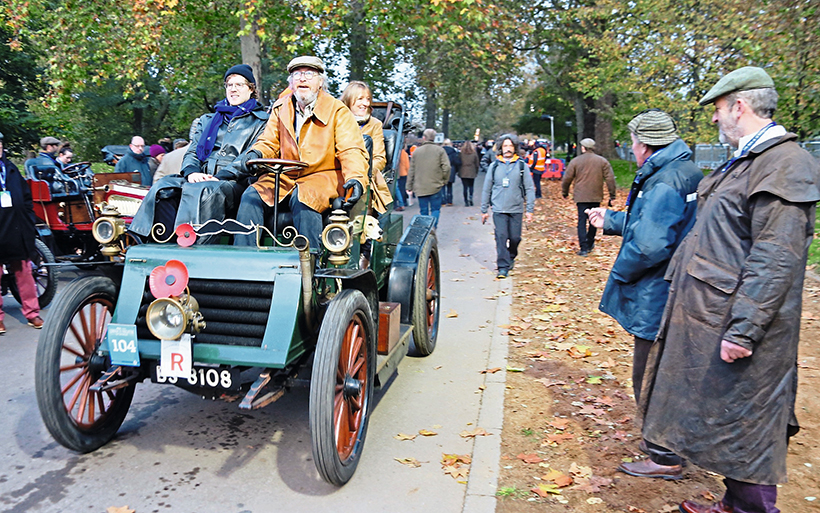
The cars lining up for the start as the Haynes-Apperson made in Kokomo, Indiana goes by. (Pic: Colin Anton)
It has chain drive to the partially exposed differential (inc. hub). It also has a supplementary radiator fitted with an external water pump, chain-driven off the end of the crankshaft – a Nigel Parrott modification.
I stayed with Andy and Jacqui on the Saturday night, ready for the 3.45am wake-up call and five of us left Crowborough at 4.30am for central London. The car was already loaded into the box-bodied car transporter trailer. We arrived outside the Albert Hall at 6.30am, unloaded and parked in Hyde Park, alongside Serpentine Road by 6.50am. The day before many of the cars had taken part in the St James International Concours at Marlborough Road, while the RM Sotheby’s London Sale was taking place in the same area.
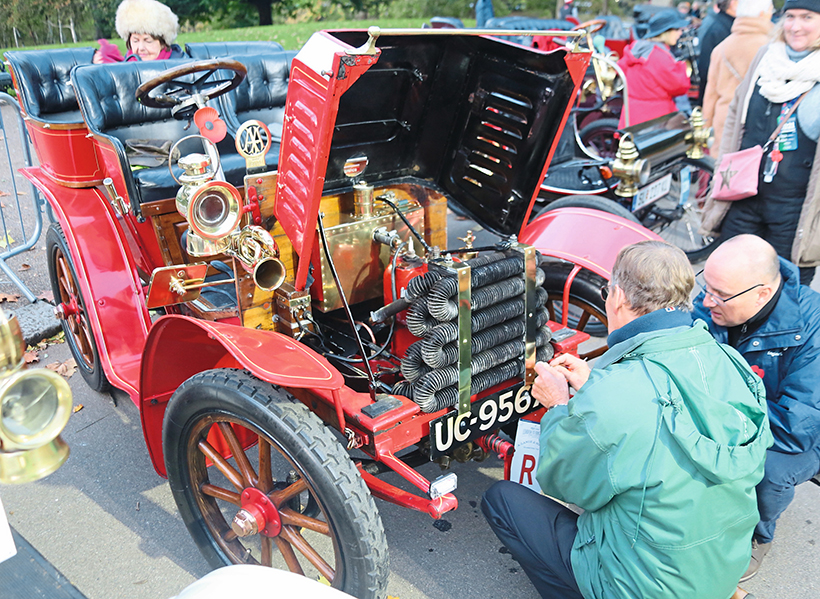
Others are still tinkering with their De Dion Bouton… (Pic: Colin Anton)
On Sunday the first batch of cars left Hyde Park at daybreak, this year at 7.02am. The oldest cars going first and, after warming the car up, we were off at 7.32am. Out through an arch, The Mall, Admiralty Arch, Trafalgar Square, past Big Ben, alongside the Houses of Parliament and over the next bridge upstream (Lambeth). There were two routes out of London, depending on the colour of the car’s catalogue/programme number (red odd numbers, blue even).
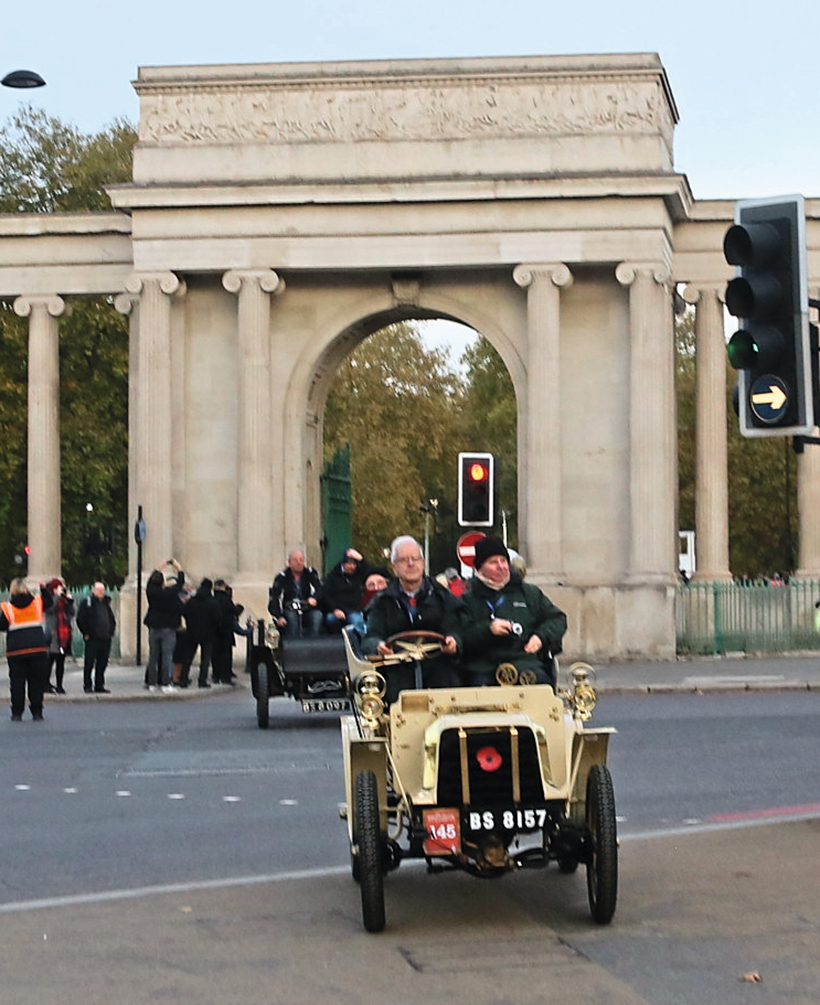
Looking back as other entrants take to the open road. (Pic: Colin Anton)
Steve and I were the two tender drivers. I rode on the car as far as Crawley and Steve drove the tender vehicle and trailer. Sitting on top of the engine and radiator, facing backwards with your collar turned up is quite cosy at about 20mph. The day was quite mild with a light breeze.
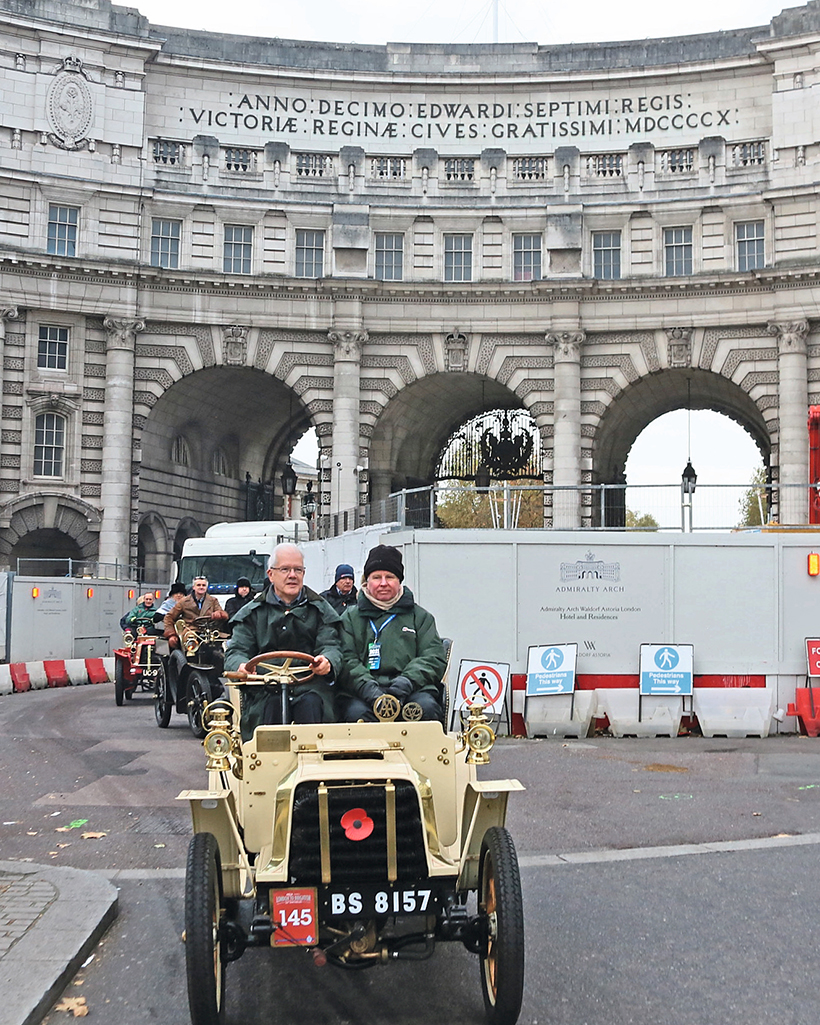
Through Admiralty Arch the cars go! (Pic: Colin Anton)
We saw a small, white-coloured veteran with two people on board leave the traffic lights, coast across the junction, the driver then jumped off and pushed it to the side. The flat leather drive belt dangling underneath. However, I do believe I saw it later in Brighton, so they made it!
Cars were breaking down all the time and I saw some struggling to even make it into Hyde Park. Also along The Mall cars were broken down! Very often a friend will stop to assist, or the RAC were on hand.
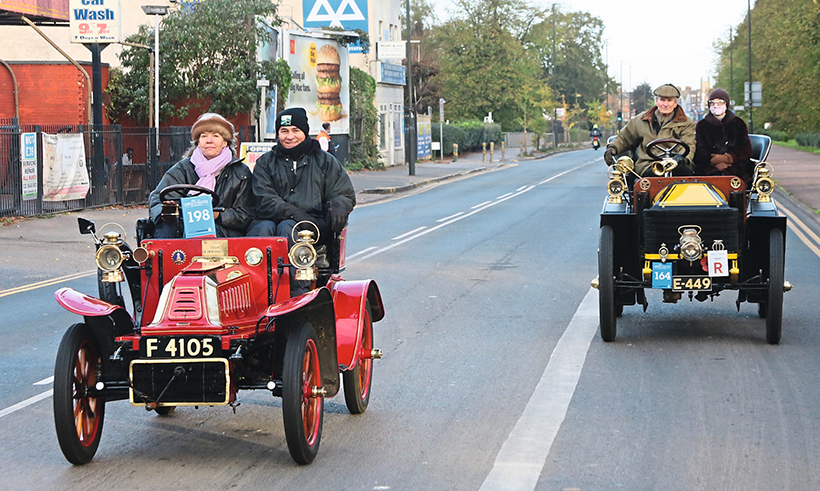
On our way to Crawley, with a 1904 De Dion and Wolseley behind. (Pic: Colin Anton)
With restricted numbers the road wasn’t too busy. We also found classic and vintage cars, plus cyclists, joining in with the run. Others parked up on the grass verges, lay-bys, village halls and so on. Families often set up a table and chairs to have a BBQ or picnic and watch the cars go by; it has became a tradition for many.
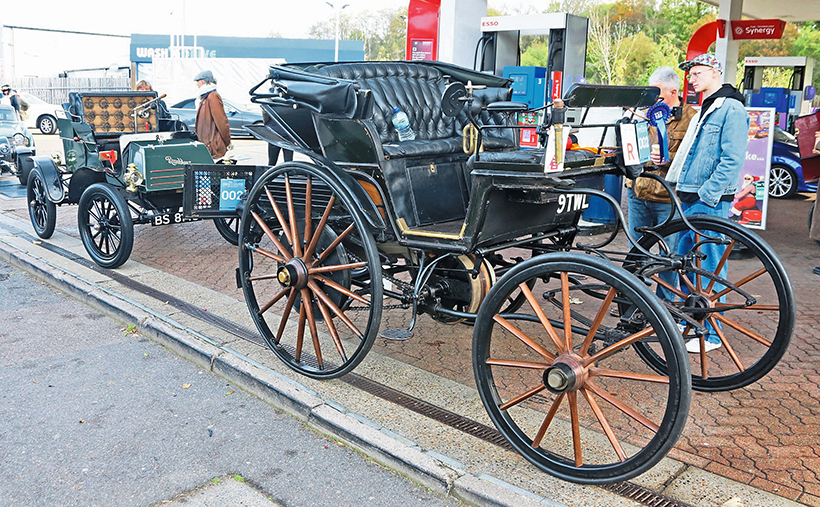
Rosie with the amazing Lutzmann in front. (Pic: Colin Anton)
There were Austins, Rolls-Royces, Bentleys, Caterham 7s, Triumph TRs and even a Fordson E1A Major and a TE-20 grey Fergie, a Diamond T along with many American muscle cars, an Austin Frogeye Sprite, Ford Anglias, Escort Mk1 Mexicos, Zephyrs and many more. There is officially a cycle class with penny-farthings taking part, remembering that a good number of motor manufacturers began in business by making cycles. There is a small pre-1905 motor-cycle class as well.

Letting things cool down – all part of the 50-mile run. (Pic: Colin Anton)
We met up with the tender at Manor Royal industrial estate, Crawley. The car was serviced, the drip feed oilers refilled, fuel and water topped up, king pin grease cups screwed down a turn. Oil had got into the rear band brakes (there are no front brakes) so they were stripped and de-greased. A cup of hot chocolate, ham roll and a cereal bar were enjoyed.
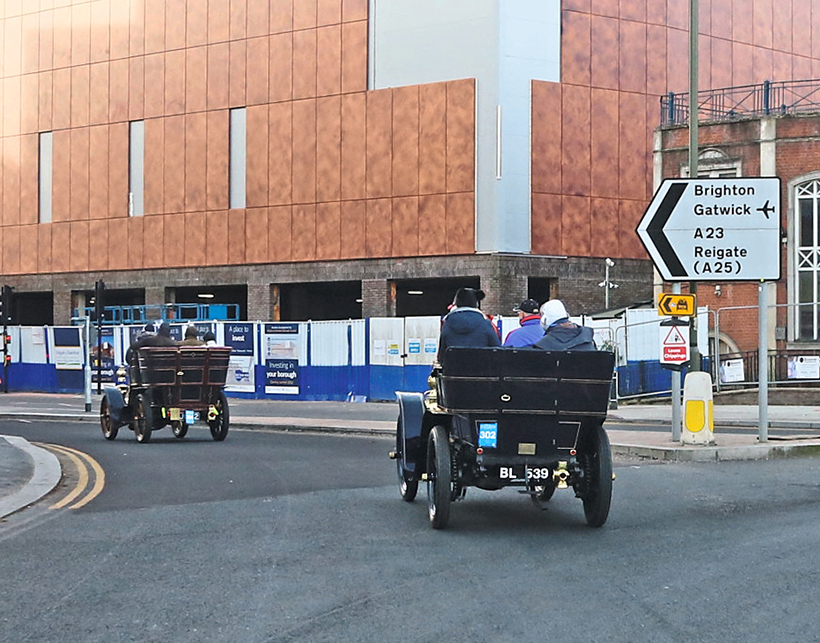
With progress being made we can keep up with more powerful cars in front. (Pic: Colin Anton)
At this point I took over the tender vehicle as the car went into the town centre. I then made my way back to the M23 (the tender vehicles for the most part using a different route) and down to the Pease Pottage services. There I watched some other veteran cars being worked on and one having the roof and windscreen removed so it could be loaded into the back of a van. So as not to get too far ahead, I stayed there a while.
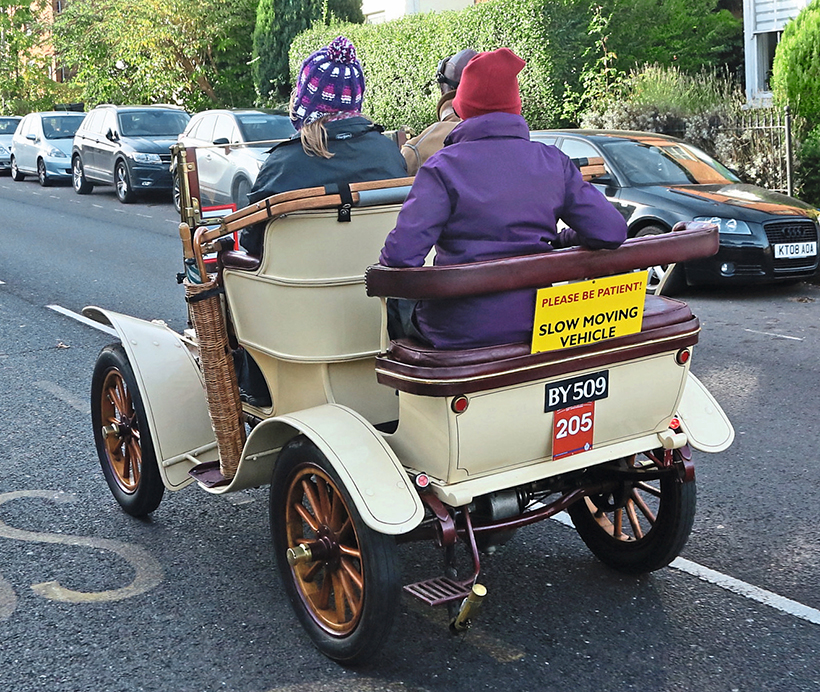
Keeping a wide berth and it’s illegal to overtake on the inside so we wait our turn. (Pic: Colin Anton)
Meanwhile, Rosie had stopped for a while in Crawley and then made her way, in quite heavy traffic, out of the town. The climb up the hill was a slow grind in first gear. Over the motorway flyover, past the Pease Pottage services and down the old A23 through all the villages.
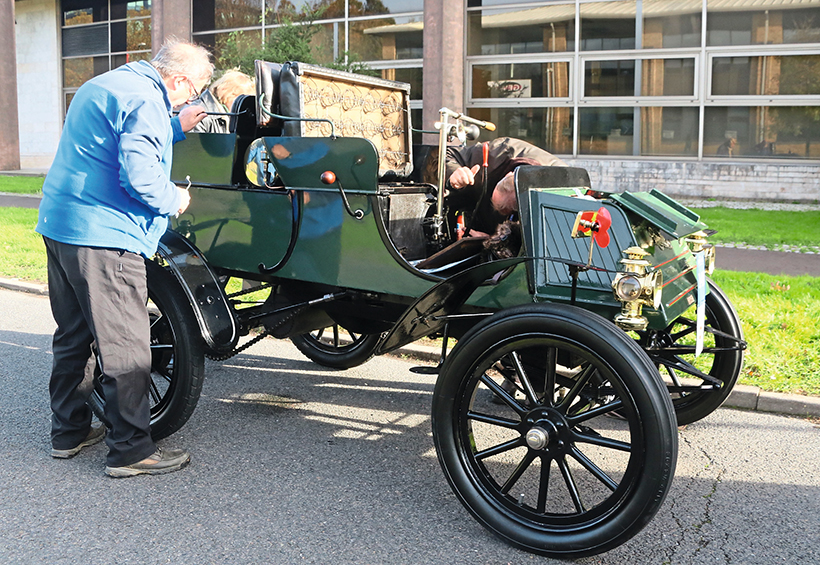
More servicing at the Crawley service point. (Pic: Colin Anton)
At Clayton Hill (Pyecombe) there were marshals standing in the middle of the two lanes directing traffic past slow, or stopped, cars. Rosie was travelling at 2-3mph up the hill with the engine temperature rising. The fan had been switched on, Andy jumped off to lighten the load and help push, Steve did the same (that’s how slow first gear is). But by now the petrol was starting to boil which you could see in the glass in-line filter above the radiator (if you lift the seat you can see the filter). The leather cone clutch was also slipping, so Rosie was brought to a halt.
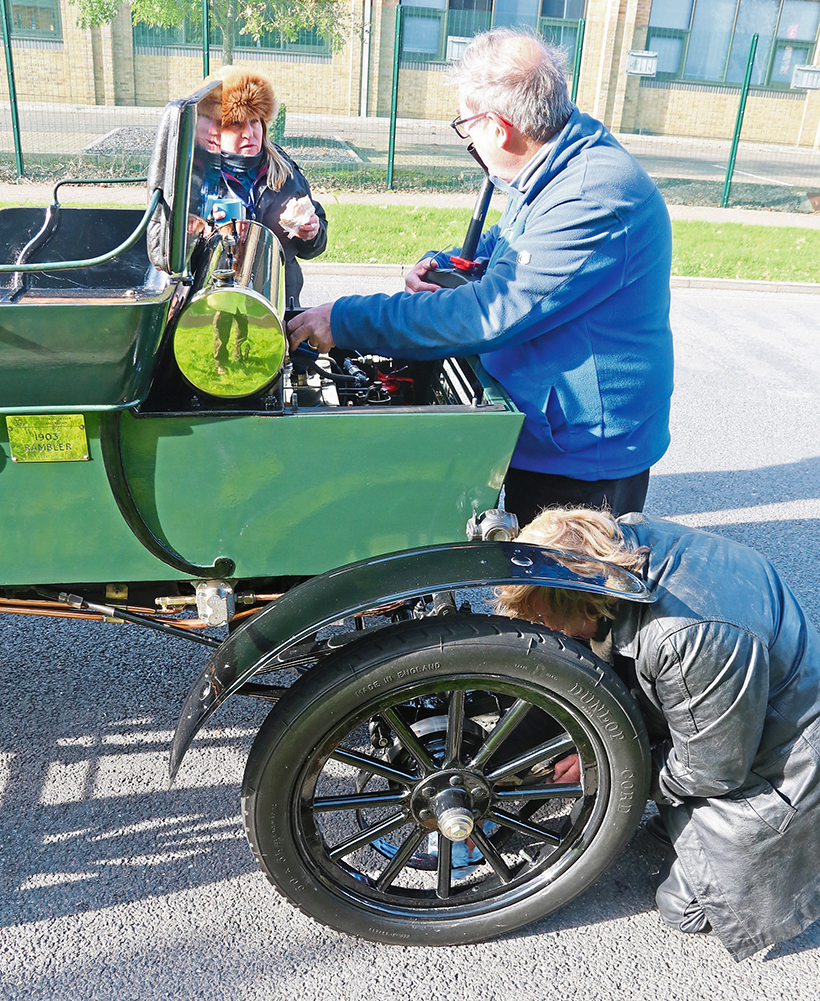
It all takes time, but at least it’s dry this year! (Pic: Colin Anton)
The All-Wheel Drive Club then towed her to the top of the hill, where the breeze cooled everything down again. This was the first time in 16 years that Rosie had needed assistance up Clayton Hill.
Meanwhile, back at Pease Pottage, I had backed the tender and trailer out from among the lorries and made my way down the M23, which then becomes the new A23. On the south side of Clayton Hill the old road merges with the new, creating three lanes. The left hand lane was coned off all the way down to the A27 flyover.
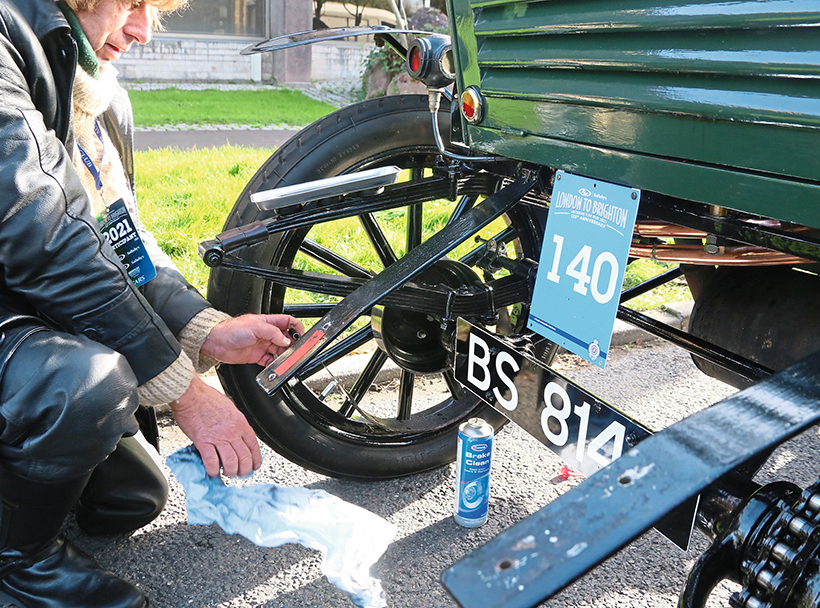
Neil services the brake band on the nearside rear hub. (Pic: Colin Anton)
I was driving along behind a camper van, so didn’t have much of a front view, but over to the left was a veteran car with four people on board, in the clear lane, making good progress having come down the hill at some speed. Well, the two in the back were facing backwards; it all looked a bit top heavy, but with a wide wheelbase. There’s a rectangular mirror low down by the mudguard and the two on the back were waving in my direction. What are the chances of two vehicles travelling out of London by two different routes and then being alongside each other on a three-lane carriageway after about 50 miles.
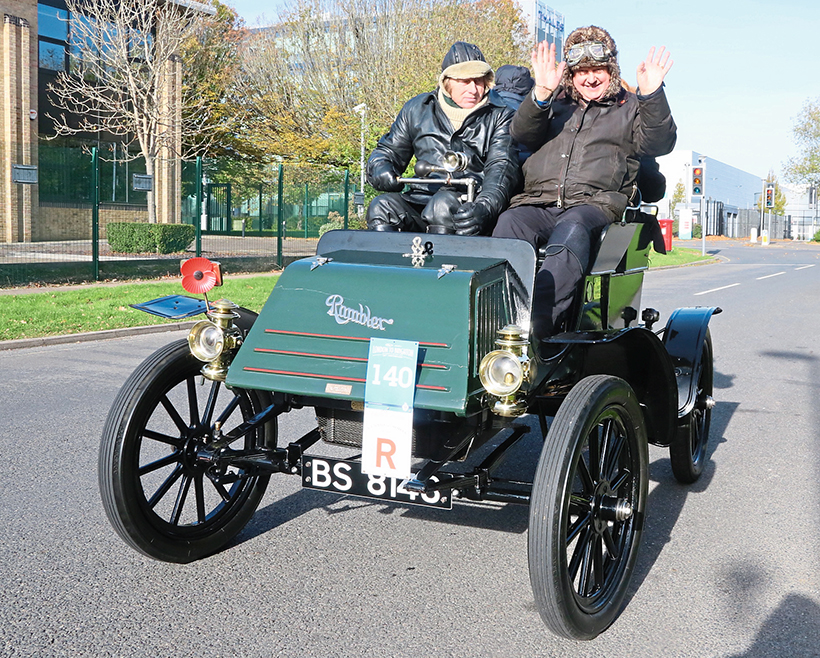
Off we go from Crawley as Rosie tackles some more challenges on the way. (Pic: Colin Anton)
Rosie carried on into Brighton and into Preston Park to be timed and registered. Each car has to arrive by 4pm to receive a medal. They then carry on to Madeira Drive where all the cars park in a herring-bone fashion and refreshments are waiting.
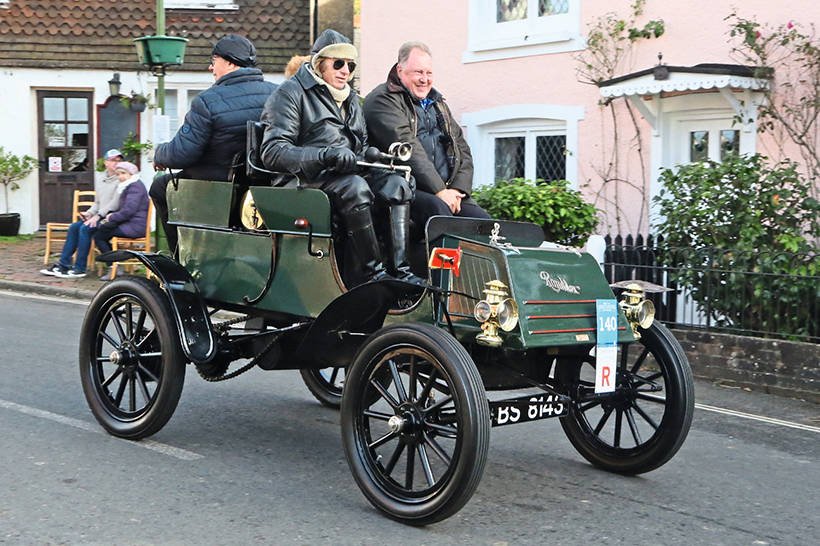
Passing Cuckfield with a raft of other veterans just after 1pm. (Pic: Peter Love)
Meanwhile, I was now on the A27 heading east, then, turn right and go over the Downs (South Downs National Park) to Rottingdean, past the Marina to go down the ramp onto Madeira Drive. As I got near, the sides became full of car trailers and transporters. Not a good sign. I was let into the ramp, to see all the way down one side full of more trailers and transporters, and vehicles were trying to come up as well.
At the bottom it was the usual chaos; instead of going left, I was directed right towards the paddock, then through the next barrier to do a U-turn. The reason for this year’s chaos was loose barriers which had previously damaged some cars and so the council cordoned off a large area.
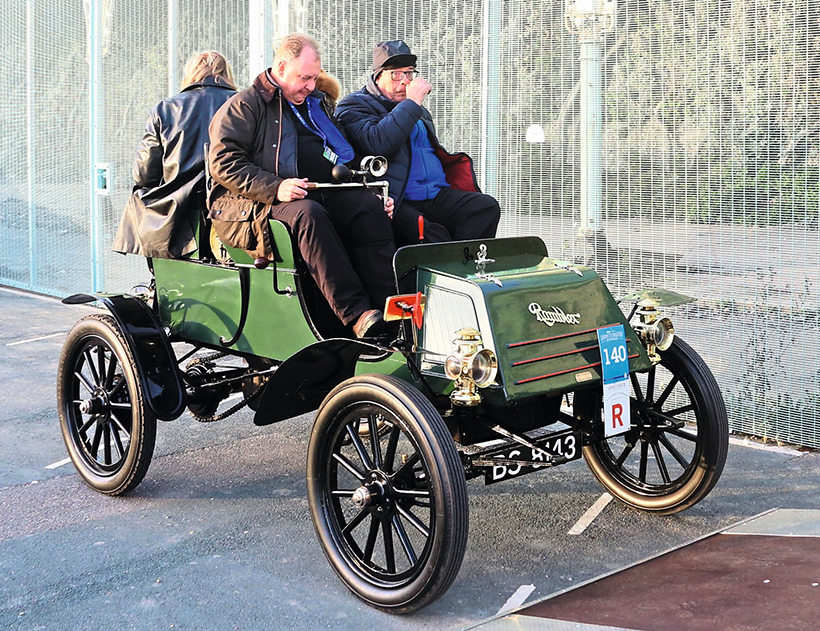
Another London to Brighton completed at Madeira Drive, fencing and all. (Pic: Colin Anton)
The technology on these old cars was ground-breaking at the time, but at the same time was so simple. Most of the cars we passed with bonnets up made it to Brighton. The car which nearly didn’t make it into Hyde Park made it to the sea front as well.
The trip home with the car on the trailer was one of satisfaction – we had made it yet again! Here’s to another year.
This feature comes from the latest issue of Old Glory, and you can get a money-saving subscription to this magazine simply by clicking HERE
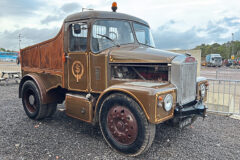
Previous Post
Vintage Scammell Highwayman sells well at Cheffins
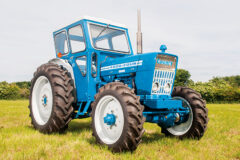
Next Post
A beautifully-restored 1972 County 4000-Four



